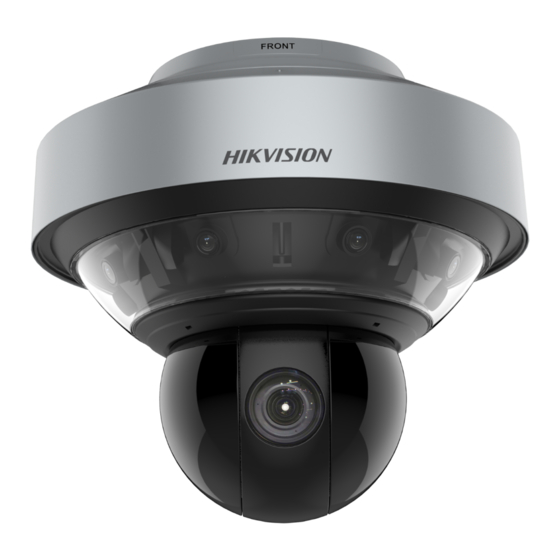
Summarization of Contents
Chapter 1 Activating and Accessing to the Camera
1.1 System Requirement
Lists system requirements for web browser access.
1.2 Activating the Camera
Explains the process of activating the camera before use.
1.3 Setting the Camera over the WAN (Optional)
How to connect the camera to the WAN with static or dynamic IP.
1.4 Accessing to the Camera
How to access the camera via web browsers and client software.
1.5 Power-up Action
Describes the camera's self-test actions upon power application.
Chapter 2 Setting Local Parameters and Network
2.1 Configuring Local Parameters
Setting live view parameters, record file paths, and picture settings.
2.2 Configuring Network Settings
Configuring TCP/IP, DDNS, PPPoE, Port, and NAT settings.
Chapter 3 Live View
3.1 Install the Plug-in
Instructions for installing the necessary browser plug-in for live view.
3.2 Live View Page
Description of the live view interface elements and operations.
3.3 Configuring Image Settings
Adjusting brightness, contrast, exposure, focus, and day/night settings.
3.4 Configuring Video and Audio Settings
Customizing video stream types, encoding, audio settings, and ROI.
Chapter 4 PTZ Control
4.1 Operating PTZ Control
Using PTZ controls, setting/calling presets, patrols, and patterns.
4.2 PTZ Configuration
Configuring basic PTZ parameters, limits, initial position, and park actions.
Chapter 5 Storage and Playback
5.1 Storage Settings
Configuring Net HDD, HDD management, and record/capture schedules.
5.2 Picture
Viewing and downloading captured picture files.
5.3 Playback
Viewing and downloading recorded video files.
Chapter 6 Events Settings
6.1 Basic Event Configuration
Setting up motion detection, video tampering, and alarm inputs/outputs.
6.2 Smart Event Configuration
Configuring intrusion, line crossing, and object detection events.
6.3 Behavior Analysis
Configuring rules for intelligent analysis like line crossing and intrusion detection.
6.4 Face Capture
Setting up face capture, overlay, and rule configurations.
6.5 People Density
Detecting and analyzing people density in configured areas.
Chapter 7 System Settings
7.1 Basic Information
Viewing device information and configuring time settings.
7.2 Maintenance
Rebooting, restoring defaults, exporting/importing configurations, and upgrading.
7.3 Security
Configuring authentication, IP address filtering, and security services.
7.4 User Management
Managing online users and their permissions.
Appendix 1 SADP Software Introduction
Search active devices online
How to search for devices automatically and manually.
Appendix 2 Statics, Interference Lightning and Surge Protection
Grounding for Cement Pole/Wall Installation
Specific grounding instructions for cement pole/wall installations.
Grounding for Metal Pole Installation
Grounding guidelines for metal pole installations.
Appendix 3 Waterproof
L-shape Pole Mount
Ensuring proper installation of L-shape pole mounts for water resistance.
Appendix 4 Bubble Maintenance
Handling dust
Techniques for removing dust from the camera bubble.
Handling oil
Procedures for cleaning oil and water drops from the camera bubble.
Appendix 5 RS-485 Bus Connection
Troubleshooting of RS-485 communication
Common issues and solutions for RS-485 communication problems.
Appendix 10 Camera Function Description
Limit Stops
Describes camera movement limits.
Scan Modes
Lists available scan modes for PTZ control.
Presets
Defines presets and their management (add, modify, delete, call).
Auto Flips
Explains automatic 180-degree image flipping for tracking continuity.
3D Positioning
How to use client software for precise positioning and zooming.
Proportional Pan/Tilt
How pan/tilt speeds adjust with zoom level.
Auto Focus
Camera automatically focuses to maintain clear images.
Day/Night Auto Switch
Automatic switching between color and B/W modes based on light.
Slow Shutter
Slows shutter speed in low light for clearer images.
Backlight Compensation (BLC)
Compensates for objects against strong backlighting.













Need help?
Do you have a question about the DS-2DP3236ZIXS-D/440/T2 and is the answer not in the manual?
Questions and answers